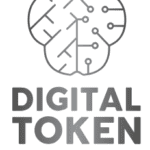Determining the “best” between ChatGPT-4 and Google Bard AI depends on the specific use case, requirements, and the criteria that matter most to you. Both models may excel in different aspects, and what might be considered the best depends on your needs. Here are a few factors to consider:
Natural Language Processing (NLP) Abilities:
Consider which model better understands and generates natural language in the context relevant to your application.
Model Size and Complexity:
Assess whether a larger or more complex model is necessary for your specific requirements.
Training Data Volume:
Evaluate how well each model has been trained and the diversity of the training data, as this can impact adaptability.
Performance Metrics:
Analyze the metrics related to the specific tasks or applications you have in mind. Look for metrics like response coherence, contextual relevance, and task completion.
Fine-Tuning and Customization:
Consider the flexibility each model offers for fine-tuning and customization to meet your application’s unique needs.
Applications and Use Cases:
Understand the strengths and weaknesses of each model in the particular domains or applications relevant to your project.
Integration and Accessibility:
Evaluate how easily each model can be integrated into your existing platforms or applications.
Ethical Considerations:
Consider the ethical guidelines and practices of each model, especially if your project involves sensitive data or user interactions.
User Feedback and Reviews:
Look for real-world experiences and feedback from users who have implemented either ChatGPT-4 or Google Bard AI in similar applications.
It’s essential to conduct a thorough evaluation based on your specific requirements and prioritize factors that are crucial for your use case. In many cases, the “best” choice depends on the trade-offs you are willing to make and the goals you aim to achieve with the AI model.
It’s a well-established fact : the pace of technological advancement is swift, and the future of technology is not on the horizon but right here, in the present.



4 comments
[…] behavior. These strategies showcase the community’s creativity in harnessing the power of ChatGPT within the constraints of token […]
[…] intelligence follows a substantial investment in OpenAI earlier this year. Building on the success of ChatGPT, an AI chatbot that gained attention for its novel responses, Microsoft brought the power of […]
[…] treated by the company as the most powerful ever created by its team. It can already be tested on Bard (ChatGPT’s competitor), but for now, only in […]
[…] Gemini’s claim of outperforming ChatGPT has sparked industry-wide interest. Yet, OpenAI, the creative force behind ChatGPT, is not resting on its laurels, teasing a more powerful version set to debut next […]